Musée-expositionPierre (also known as Per) Jaïn (1904-1967)
Non Extant
Kerioret Izella, Kerlaz, Bretagne, 29100, France
begun early 1950s
The site non-extant, except for several granite sculptures
About the Artist/Site
Born the fifth of eight children of a large family in Kerlaz, Finistère, in France’s northwestern province of Brittany, as a young boy Pierre Jaïn’s education was interrupted due to a badly broken ankle; he was immobilized for a long time, and when he returned to school, he was two years older than his classmates. He therefore left school after age ten, and went to work on his parents’ farm. He served in the military from 1924-1925 and when his father died in 1931, he took his place running the farm.
With the imminent war with Germany, however, Jaïn was redrafted into the army in 1939, but in March, 1940, he was in a car accident where he broke both legs, requiring a long hospital stay in order to recover and recuperate. During that long period of rehabilitation he discovered his interest in drawing and sculpting, often carving small pieces of wood with a pocket knife.
In 1942 Jaïn returned to Kerlaz to resume the management of the farm, a task he transferred to a brother six years later, as the effects of the accident had reduced his physical abilities and he would always have problems walking.
Jaïn never married. In the early 1950s he organized his own accommodations on the farm's grounds, linking it to a 3 x 7 square meter shed that he could use as a studio. By around 1956, Jaïn retired from working on the farm, drawing on his pension as an injured veteran as well as receiving a pension from his brother from his years working. Then, in his early fifties, he began creating artworks.
An explosion of creativity
In his studio Jaïn dedicated himself to making sculptures, some assembled from animal bones obtained from the local butcher, others from locally available pieces of granite, and a rather large number from tree stumps or other pieces of wood he found locally. Rising early in the morning, he worked steadily, making some 400 creations over the next eight years. Many of his sculptures reveal his interest in Breton folklore, legends and belief systems. On shelves along the walls of the studio dozens of sculptures were arranged, often freestanding figures such as devils, saints, historical characters, and iconic Breton figures and celebrities. He also created composite creations, such as a scene of a Breton village or a woman and a dragon. Those sculptures created from granite or cement were displayed in the garden and orchard.
Living near the bay of Douarnenez, which is directly connected to the Atlantic Ocean, Jaïn feared the power of the ocean waters and, familiar with the Breton legend of Ker-Ys, comparable to the biblical story of the flood, he surrounded the site with a system of protective devices. These included a series of wooden sentinels with a hideous look to ward off evil intentions, a Groupe Tricéphale (a three-headed granite sculpture) at the entrance, a gargoyle, and a three-meter-high wooden totem with a thin face topped with a cap of zinc.
His art environment had also some other special features. There was a Hutte d'Adam (Adam's hut), a man-sized molehill with an opening through which a seated Adam could be observed, which was linked with a chain to Eve, who was located in a hut named Tentation d'Eve (Temptation of Eve). Taken together, this ensemble depicted the paradis terrestre (heaven on earth). There was also a self-made musical instrument, the Jaïnophone, a percussion set of mostly metal tubes that he constructed from a wide variety of recycled materials including copper pipes, bed springs, plowshares, and other sound- producing objects. Jaïn actually played this instrument, producing music hors norms (non-standard).
A sign at the entrance with the text Musée-Exposition welcomed visitors, and vacationing tourists from the U.K. and the Netherlands indeed came by. However, by June 1966 Jaïn developed very serious psychiatric problems. He was admitted to the psychiatric hospital in Quimper, where he stayed for more than a year. He returned home in August, 1967 but passed away on November 21, 1967.
Later developments
Pierre Maunoury, a psychiatrist and artist from the region who had visited Jaïn in 1964, wrote about the artworks in the Fascicules d'Art Brut no 10, published by the Collection d'Art Brut in Lausanne, Switzerland. He also donated a set of decorated bones to the museum that he had earlier acquired. Then, in 1991, Bruno Montpied rediscovered Jaïn's artwork and disseminated information about it widely. Discrete artworks came to be included in various regional and local expositions: in 1965 in Douarnenez (organized by Pierre Jaïn himself); in 2001 in Dol de Bretagne (l'Art Brut à l'ABRI); in 2002 in Kerlaz (organized by Jaïn's family), in 2013 in Brest (l'Art Brut à l'Ouest), and in 2017 again in Kerlaz, organized on the occasion of the new book by Benoît Jaïn, one of Pierre’s great-nephews: PIERRE JAÏN, UN HÉRÉTIQUE CHEZ LES BRUTS, published by YIL, Plonévez-Porzay. He has also created a website to celebrate his great-uncle’s work.
Actual state of the artworks
With several exceptions, the approximately 400 freestanding wooden sculptures, divided among various members of the Jaïn family, still exist. Most other decorative items, the Jaïnophone included, have been removed. However, the wooden sculptures that were displayed outside in the Musée-exposition perished due to the effects of the weather. Consequently, today the garden currently contains only a few granite sculptures, partly weathered by growing moss. The farmhouse has become a gîte, where vacationing tourists can rent a room. The presence of the sculptures has been a positive factor in promoting the attractiveness of the site for holiday accommodations.
~Henk van Es
Map & Site Information
Kerioret Izella
Kerlaz, Bretagne, 29100
fr
Latitude/Longitude: 48.1013198 / -4.2780891
Nearby Environments


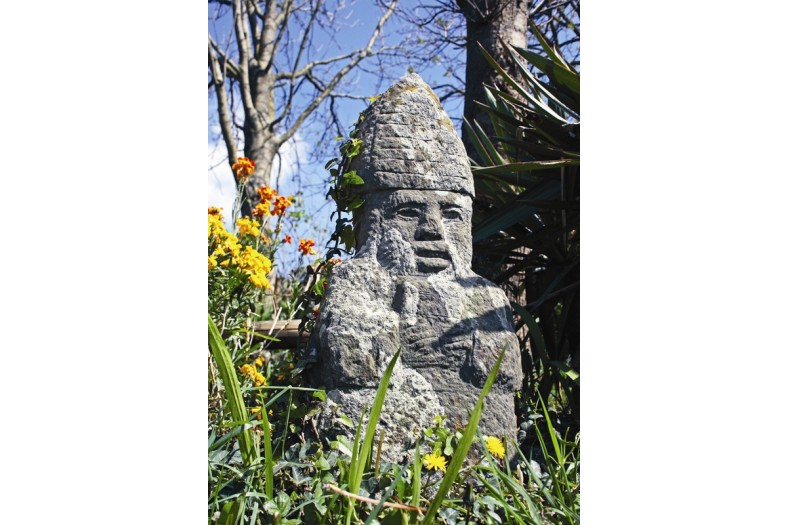
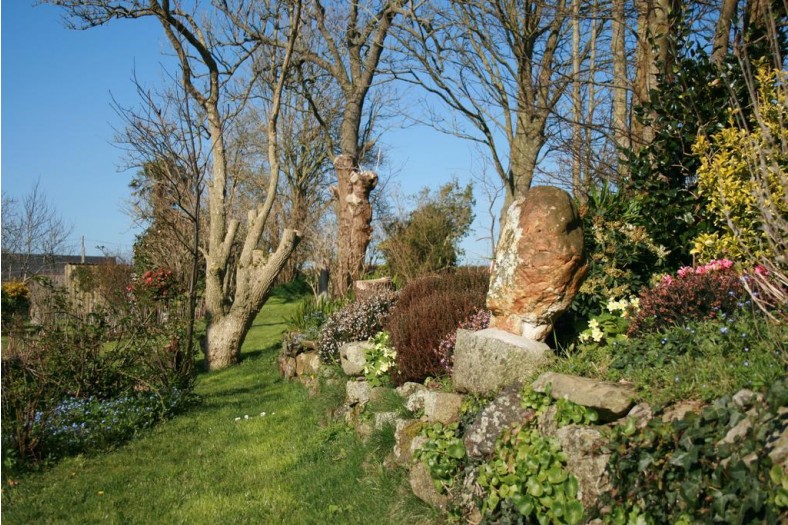
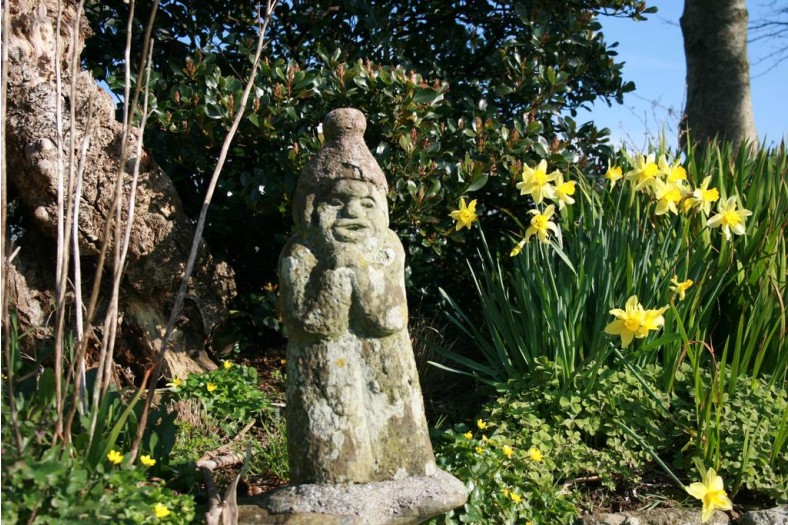
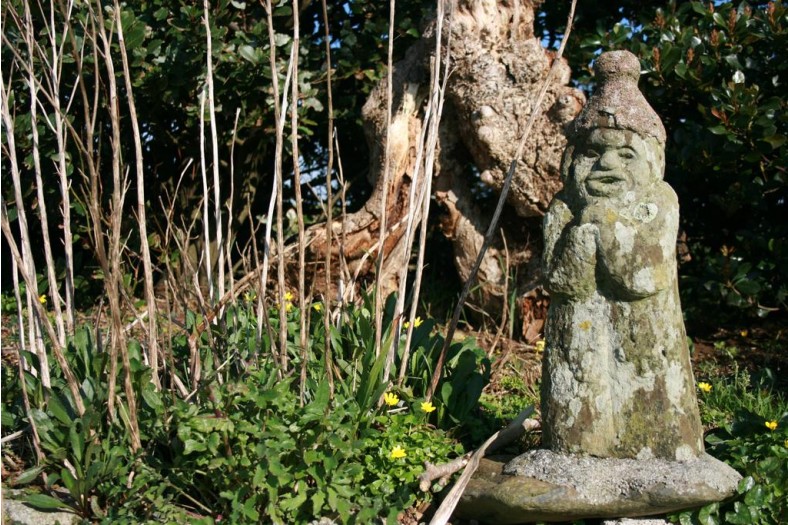
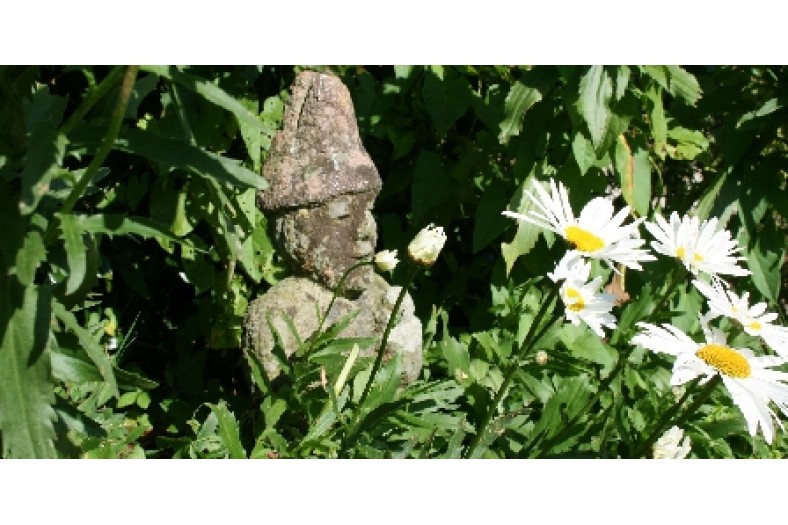
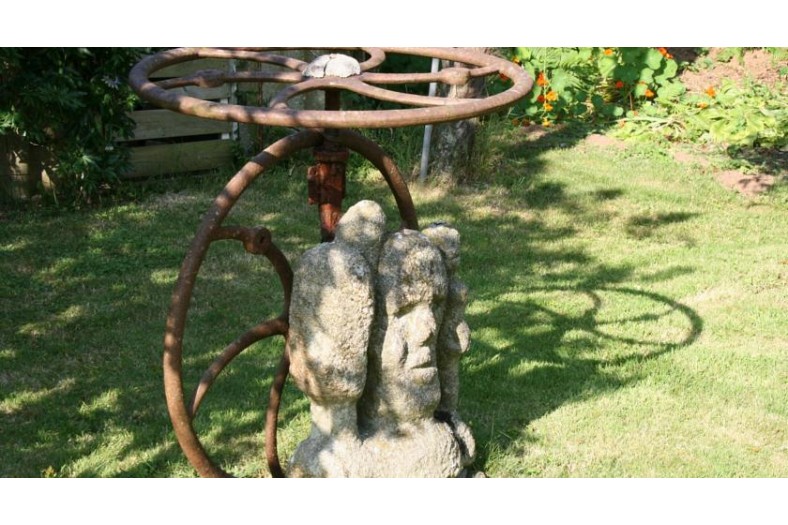
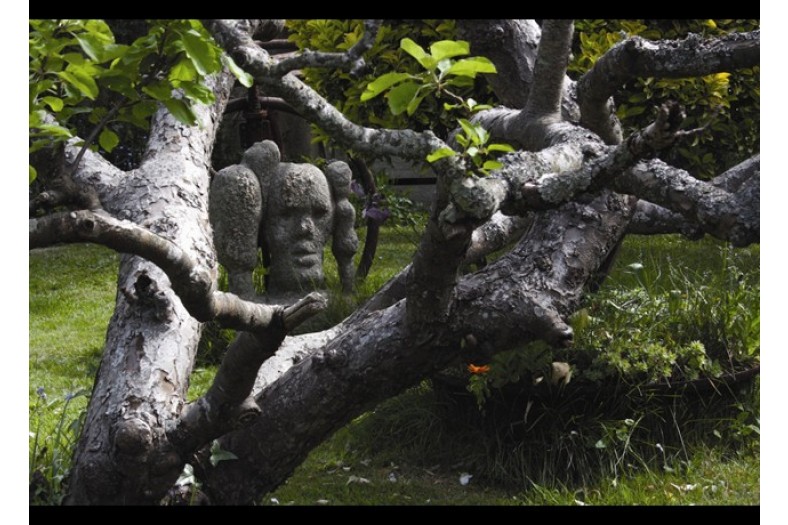
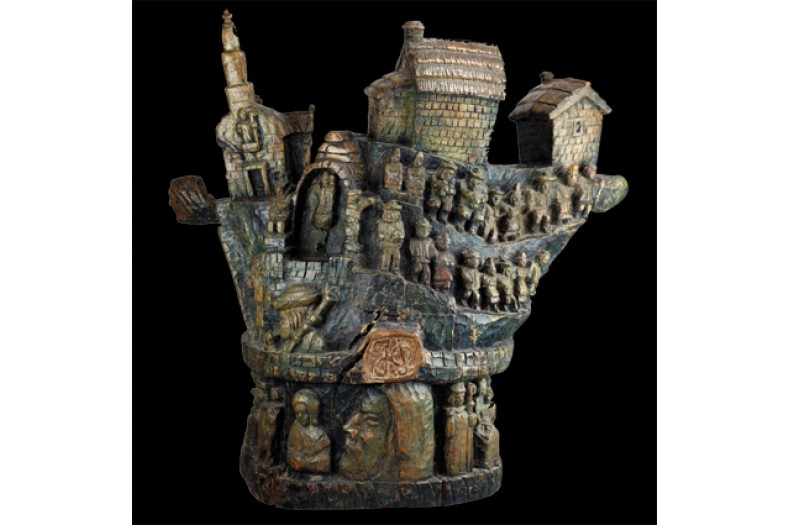
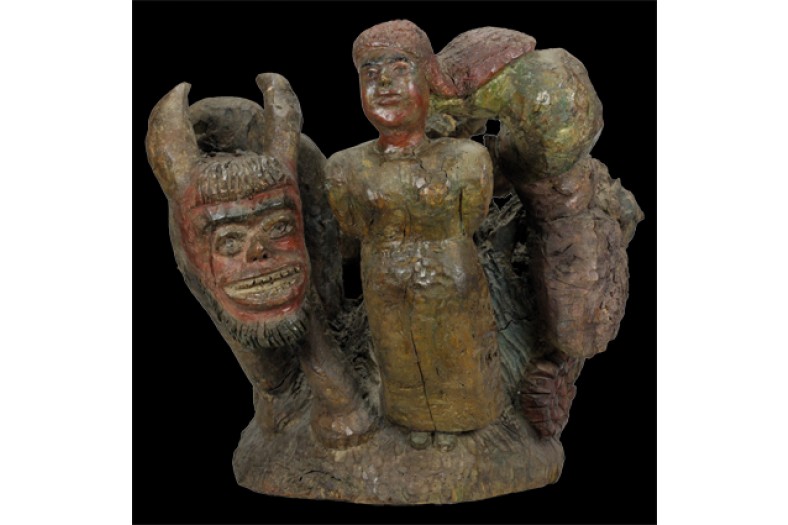

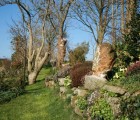
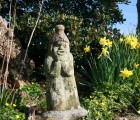
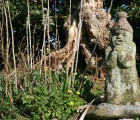
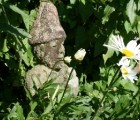
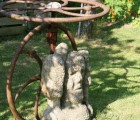
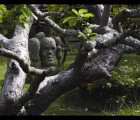

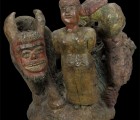
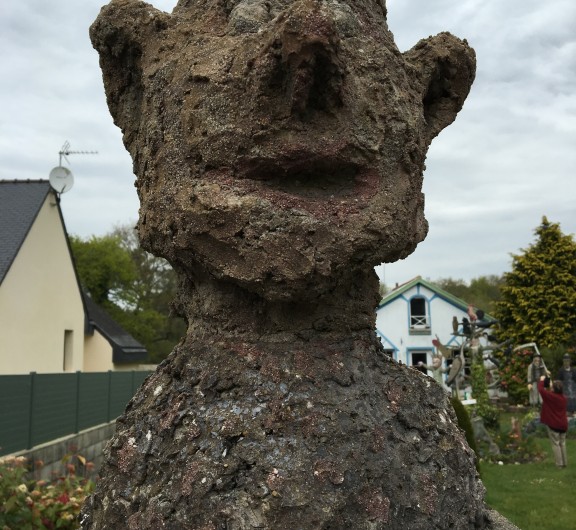
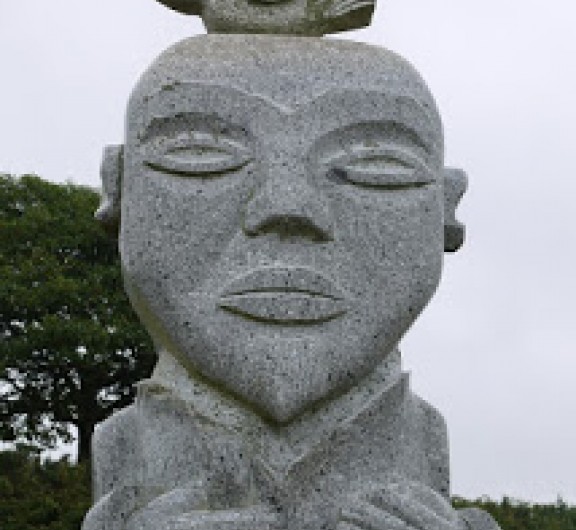
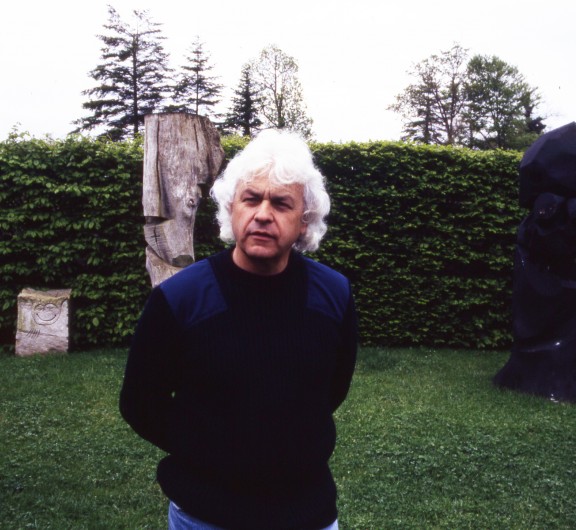
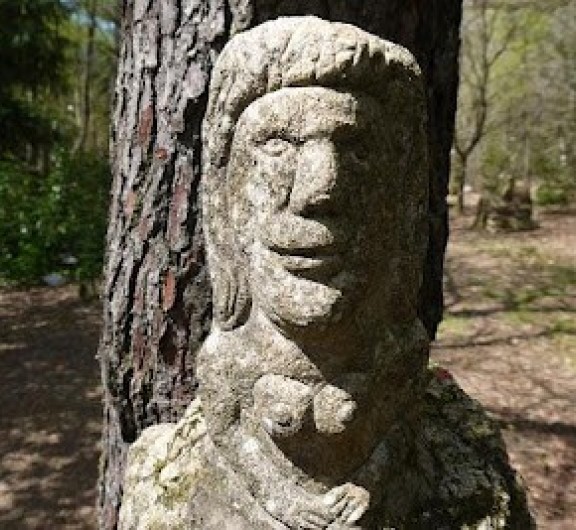

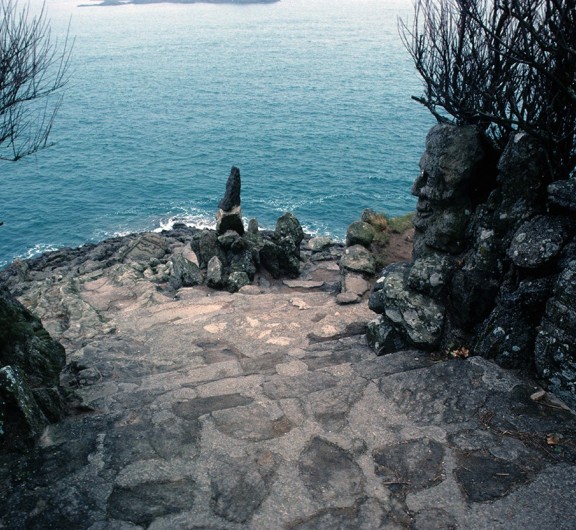

Post your comment
Comments
No one has commented on this page yet.